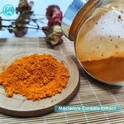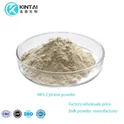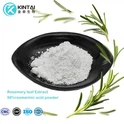Polydatin and resveratrol are two normal mixtures found in specific plants that have been broadly read up for their restorative potential. Both offer likenesses in their synthetic construction and natural exercises. Nonetheless, there are additional key contrasts between these two atoms. The reason for this article is to investigate polydatin and resveratrol top to bottom - their sources, science, pharmacological impacts, and potential medical advantages - as well as dissect their near assets and any conceivable synergistic collaborations.
Understanding Polydatin and Resveratrol
Polydatin, otherwise called piceid, is a stilbenoid glucoside compound found in high fixations in the root and rhizome concentrates of the Polygonum cuspidatum plant. Resveratrol, then again, is a stilbenoid phenol that can be tracked down in the skin of grapes, red wine, peanuts, and a few berries. While they share a similar essential stilbene spine structure, polydatin has a glucose particle joined, making it a glycoside of resveratrol.
A few examinations have shown that polydatin applies cell reinforcement, calming, cardioprotective, neuroprotective, and immunomodulatory impacts equivalent to resveratrol. After oral ingestion, polydatin is switched over completely to resveratrol by compounds in the digestion tracts and liver prior to being consumed into the circulatory system. In this manner, enhancing with polydatin might be viewed as an elective approach to conveying resveratrol fundamentally.
Chemical Differences and Similarities
The key structural difference between polydatin and resveratrol lies in the glycosylation - the presence of a glucose molecule bound to the resveratrol core in polydatin. However, as mentioned earlier, polydatin is deglycosylated during first-pass metabolism to yield free resveratrol.
In terms of biological activity, both polydatin and resveratrol have been found in studies to demonstrate antioxidant, anti-inflammatory, anti-disease, cardioprotective, neuroprotective, anti-diabetic and immunomodulatory effects. These effects have been attributed to their influence on signaling pathways that regulate cell proliferation and survival, platelet aggregation, enzyme activities, and gene expression. While their precise mechanisms of action may differ, the end physiological effects are quite comparable.
Health Benefits of Polydatin and Resveratrol
There is substantial preclinical evidence that suggests polydatin powder can help prevent oxidative damage, attenuate cognitive decline, reduce myocardial injury after heart attacks, and alleviate diabetes complications among other benefits. Resveratrol is perhaps even more extensively studied - it has shown promise for treating diabetes, obesity, cardiovascular diseases, neurological disorders, disease, bone and joint problems, and more.
While most of the attributed health benefits are shared between both compounds, some studies indicate unique effects specific to only one. For example, polydatin demonstrates more targeted antimicrobial action, while resveratrol exhibits anti-platelet aggregation effects that polydatin lacks. Their relative bioavailability and retention time inside human cells also differ owing to the glycoside structure of polydatin. This may contribute to variability in their precise physiological effects.
Comparative Analysis
A key advantage that polydatin possesses over resveratrol is its significantly higher bioavailability after oral ingestion. As a glycoside conjugate, polydatin gets absorbed more efficiently and also has higher water solubility. One study found over 70% higher plasma resveratrol levels in humans receiving polydatin supplements compared to equivalent doses of resveratrol. Once absorbed, polydatin gets converted to resveratrol, extending its duration inside the body.
While conversion to resveratrol is facilitated by enzymes in the intestine and liver, not all of the polydatin gets transformed. Unmetabolized polydatin reaches systemic circulation and tissues, where it can exert unique effects based on its glycosylated structure interacting with cellular receptors and proteins in ways that resveratrol cannot. These factors - increased bioavailability, extended half-life, and distinctive interactions - give polydatin powder certain advantages over resveratrol as a therapeutic agent.
Potential Synergistic Effects
Emerging research is revealing that polydatin and resveratrol may have complementary and possibly even synergistic effects when used in combination. One study reported a synergistic neuroprotective action against stroke injury, while another proposed enhanced anti-disease properties against lung carcinoma. Scientists are also actively working on novel drug delivery systems like microspheres, liposomes and nanoparticle complexes that can co-encapsulate polydatin and resveratrol to exploit any synergies.
These initial results merit further investigation into formulating and administering polydatin and resveratrol concomitantly to benefit from their combined effects. Optimal dosing ratios and mechanisms involved in any synergies are still to be fully elucidated through pharmacokinetic analyses and molecular signaling studies in humans. An integrated understanding can pave the way for multi-agent natural products representing an efficacious therapeutic strategy.
What foods are high in polydatin?
Polydatin is found in abundance in Polygonum cuspidatum, a Chinese medicinal herb also known as Japanese knotweed. The roots and rhizomes of Japanese knotweed contain high concentrations of polydatin and have been used in Traditional Chinese Medicine preparations for various ailments. Polydatin supplements derived from this herb are also available. Resveratrol dietary sources like red wine and grapes do not contain meaningful levels of polydatin.
Conclusion
In summary, while their core stilbene structure is similar and many of their biological effects overlap significantly, polydatin possesses certain advantages over resveratrol as a nutritional supplement and therapeutic agent. These include superior bioavailability, extended duration in the body, distinct protein interactions by virtue of its glycosylation, and promise of synergies when used alongside resveratrol. More human research is warranted to fully establish optimal dosing, safety, and efficacy of polydatin both by itself and in concert with resveratrol. Consult a health professional before starting any new supplement regimen.
Welcome To Send Us Emails If You Are Interested In Polydatin Powder At Sales@Kintaibio.Com.
References:
1. Hügel, H.M. & Jackson, N. Polydatin: Properties, biosynthesis and biotechnological production. Applied Microbiology and Biotechnology 100, 1–15 (2016).
2. Jin, X. et al. Cis-Stilbene Glucoside Suppresses Ovalbumin-Induced Allergic Inflammation in a Mouse Model of Asthma. Inflammation 39, 137–144 (2016).
3. Li, X. et al. Bioavailability of stilbenes: monomeric stilbenes and stilbenoids are more bioavailable than their glucosides and polymeric derivatives. Arch Toxicol 90, 505–519 (2016).
4. Liu, Y. et al. Comparative absorption of resveratrol and polydatin in mouse blood-brain barrier and their inhibition of alpha-synuclein pathology in transgenic mouse brain. Neurotherapeutics 16, 424–438 (2019).
5. Paul, B. et al. Delivery of resveratrol and polydatin using lipidic cubic phase (LCP) and LCP encapsulated polyphosphate nanoparticles: systems to overcome bioavailability issues and to improve therapeutic efficacy. European Journal of Pharmaceutics and Biopharmaceutics 150, 22–35 (2020).
Is Polydatin the Same as Resveratrol?
Polydatin and resveratrol are two normal mixtures found in specific plants that have been broadly read up for their restorative potential. Both offer likenesses in their synthetic construction and natural exercises. Nonetheless, there are additional key contrasts between these two atoms. The reason for this article is to investigate polydatin and resveratrol top to bottom - their sources, science, pharmacological impacts, and potential medical advantages - as well as dissect their near assets and any conceivable synergistic collaborations.
Understanding Polydatin and Resveratrol
Polydatin, otherwise called piceid, is a stilbenoid glucoside compound found in high fixations in the root and rhizome concentrates of the Polygonum cuspidatum plant. Resveratrol, then again, is a stilbenoid phenol that can be tracked down in the skin of grapes, red wine, peanuts, and a few berries. While they share a similar essential stilbene spine structure, polydatin has a glucose particle joined, making it a glycoside of resveratrol.
A few examinations have shown that polydatin applies cell reinforcement, calming, cardioprotective, neuroprotective, and immunomodulatory impacts equivalent to resveratrol. After oral ingestion, polydatin is switched over completely to resveratrol by compounds in the digestion tracts and liver prior to being consumed into the circulatory system. In this manner, enhancing with polydatin might be viewed as an elective approach to conveying resveratrol fundamentally.
Chemical Differences and Similarities
The key structural difference between polydatin and resveratrol lies in the glycosylation - the presence of a glucose molecule bound to the resveratrol core in polydatin. However, as mentioned earlier, polydatin is deglycosylated during first-pass metabolism to yield free resveratrol.
In terms of biological activity, both polydatin and resveratrol have been found in studies to demonstrate antioxidant, anti-inflammatory, anti-disease, cardioprotective, neuroprotective, anti-diabetic and immunomodulatory effects. These effects have been attributed to their influence on signaling pathways that regulate cell proliferation and survival, platelet aggregation, enzyme activities, and gene expression. While their precise mechanisms of action may differ, the end physiological effects are quite comparable.
Health Benefits of Polydatin and Resveratrol
There is substantial preclinical evidence that suggests polydatin supplementation can help prevent oxidative damage, attenuate cognitive decline, reduce myocardial injury after heart attacks, and alleviate diabetes complications among other benefits. Resveratrol is perhaps even more extensively studied - it has shown promise for treating diabetes, obesity, cardiovascular diseases, neurological disorders, disease, bone and joint problems, and more.
While most of the attributed health benefits are shared between both compounds, some studies indicate unique effects specific to only one. For example, polydatin demonstrates more targeted antimicrobial action, while resveratrol exhibits anti-platelet aggregation effects that polydatin lacks. Their relative bioavailability and retention time inside human cells also differ owing to the glycoside structure of polydatin. This may contribute to variability in their precise physiological effects.
Comparative Analysis
A key advantage that polydatin possesses over resveratrol is its significantly higher bioavailability after oral ingestion. As a glycoside conjugate, polydatin gets absorbed more efficiently and also has higher water solubility. One study found over 70% higher plasma resveratrol levels in humans receiving polydatin supplements compared to equivalent doses of resveratrol. Once absorbed, polydatin gets converted to resveratrol, extending its duration inside the body.
While conversion to resveratrol is facilitated by enzymes in the intestine and liver, not all of the polydatin gets transformed. Unmetabolized polydatin reaches systemic circulation and tissues, where it can exert unique effects based on its glycosylated structure interacting with cellular receptors and proteins in ways that resveratrol cannot. These factors - increased bioavailability, extended half-life, and distinctive interactions - give polydatin certain advantages over resveratrol as a therapeutic agent.
Potential Synergistic Effects
Emerging research is revealing that polydatin and resveratrol may have complementary and possibly even synergistic effects when used in combination. One study reported a synergistic neuroprotective action against stroke injury, while another proposed enhanced anti-disease properties against lung carcinoma. Scientists are also actively working on novel drug delivery systems like microspheres, liposomes and nanoparticle complexes that can co-encapsulate polydatin and resveratrol to exploit any synergies.
These initial results merit further investigation into formulating and administering polydatin and resveratrol concomitantly to benefit from their combined effects. Optimal dosing ratios and mechanisms involved in any synergies are still to be fully elucidated through pharmacokinetic analyses and molecular signaling studies in humans. An integrated understanding can pave the way for multi-agent natural products representing an efficacious therapeutic strategy.
What foods are high in polydatin?
Polydatin is found in abundance in Polygonum cuspidatum, a Chinese medicinal herb also known as Japanese knotweed. The roots and rhizomes of Japanese knotweed contain high concentrations of polydatin and have been used in Traditional Chinese Medicine preparations for various ailments. Polydatin supplements derived from this herb are also available. Resveratrol dietary sources like red wine and grapes do not contain meaningful levels of polydatin.
Conclusion
In summary, while their core stilbene structure is similar and many of their biological effects overlap significantly, polydatin possesses certain advantages over resveratrol as a nutritional supplement and therapeutic agent. These include superior bioavailability, extended duration in the body, distinct protein interactions by virtue of its glycosylation, and promise of synergies when used alongside resveratrol. More human research is warranted to fully establish optimal dosing, safety, and efficacy of polydatin both by itself and in concert with resveratrol. Consult a health professional before starting any new supplement regimen.
References:
1. Hügel, H.M. & Jackson, N. Polydatin: Properties, biosynthesis and biotechnological production. Applied Microbiology and Biotechnology 100, 1–15 (2016).
2. Jin, X. et al. Cis-Stilbene Glucoside Suppresses Ovalbumin-Induced Allergic Inflammation in a Mouse Model of Asthma. Inflammation 39, 137–144 (2016).
3. Li, X. et al. Bioavailability of stilbenes: monomeric stilbenes and stilbenoids are more bioavailable than their glucosides and polymeric derivatives. Arch Toxicol 90, 505–519 (2016).
4. Liu, Y. et al. Comparative absorption of resveratrol and polydatin in mouse blood-brain barrier and their inhibition of alpha-synuclein pathology in transgenic mouse brain. Neurotherapeutics 16, 424–438 (2019).
5. Paul, B. et al. Delivery of resveratrol and polydatin using lipidic cubic phase (LCP) and LCP encapsulated polyphosphate nanoparticles: systems to overcome bioavailability issues and to improve therapeutic efficacy. European Journal of Pharmaceutics and Biopharmaceutics 150, 22–35 (2020).







